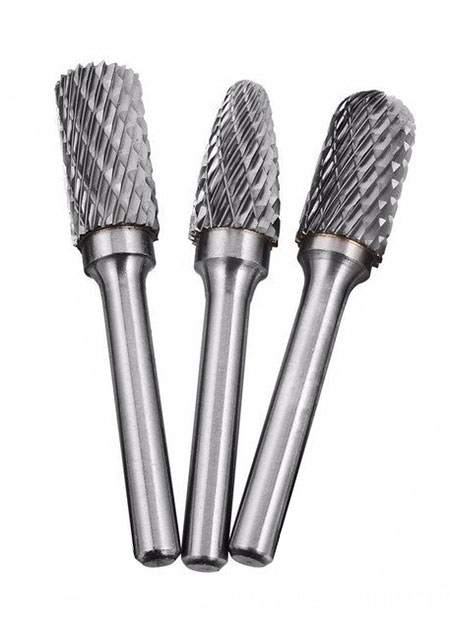Carbide rotary files bit(Carbide Burrs)
Carbide rotary files bit, also known as carbide mold milling cutters, are mainly used with electric or pneumatic tools as the driving force (they can also be mounted on high-speed […]
Carbide rotary files bit, also known as carbide mold milling cutters, are mainly used with electric or pneumatic tools as the driving force (they can also be mounted on high-speed machine tools).
Introduction.
They have a wide range of applications, primarily in industries such as aviation, marine, automotive, machinery, and chemical. They can be used to process materials such as cast iron, cast steel, carbon steel, alloy steel, stainless steel, hardened steel, copper, and aluminum. As rotary files are manually controlled tools mounted on high-speed rotation, the pressure and feed rate they experience determine the tool’s lifespan and cutting performance.
Our factory business: carbide parts, mold parts, medical injection molds, precision injection molds, teflon PFA injection molding, PFA tube fittings. email: [email protected],whatsapp:+8613302615729.
Advantages.
- Can process metals such as cast iron, cast steel, carbon steel, alloy steel, stainless steel, copper, aluminum, as well as non-metals like stone and jade.
- Can replace small grinding wheels with handles, without generating dust like small grinding wheels.
- High efficiency. Processing efficiency is tens of times higher than manual files and nearly ten times higher than small grinding wheels with handles.
- Good processing quality and high smoothness. They can create various high-precision mold cavities.
- Long service life. Durability is ten times higher than high-speed steel tools and over 200 times higher than small grinding wheels.
- Convenient and simple to use, safe and reliable.
- High cost-effectiveness, reducing comprehensive processing costs by tens of times.
When using carbide rotary files bit, the following steps should be followed.
- Select the appropriate rotary file, rotation speed, and pressure based on the material and hardness of the workpiece.
- Clamp the rotary file onto the electric or pneumatic tool, ensuring a secure and proper fit.
- Securely fasten the workpiece to the workbench.
- When starting the rotary processing, maintain the correct cutting direction, avoid getting the rotary file stuck in grooves or gaps, and refrain from using it to twist or bend the workpiece.
- Pay attention to safety during use, wear suitable protective goggles to prevent injury from flying debris.
- After completing the processing, remove the rotary file from the electric or pneumatic tool, clean it, and store it properly.
- It is important to note that carbide rotary files bit have high hardness and wear resistance but are relatively brittle and prone to breakage or fracturing. Therefore, caution should be exercised during use to avoid impact or excessive pressure. Additionally, control the rotation speed and pressure during processing to prevent vibration and overheating.

Common issues encountered during the use of carbide rotary files bit include.
- Low processing accuracy: The processing accuracy of carbide rotary files bit is influenced by various factors such as rotation speed, pressure, and cutting direction. If the processing accuracy is low, it may be due to improper control of these factors.
- Poor surface quality: The surface quality of carbide rotary file processing is affected by factors such as material hardness, rotational speed, and feed rate. If the surface quality is poor, it may be due to improper control of these factors.
- File damage or cracking: carbide rotary files bit have high hardness and wear resistance but are brittle, making them susceptible to breakage or fracturing. If the file is damaged or cracked, it may be due to impact or excessive pressure.
- Vibration and overheating: Improper control of rotation speed and pressure can lead to vibration and overheating, which can affect the processing results and tool lifespan.
To address these issues, the following solutions can be implemented.
- Adjust the rotation speed and pressure, control the cutting direction to improve processing accuracy and surface quality.
- Select appropriate cutting speed and feed rate, control cutting depth and allowances to reduce tool wear and improve processing efficiency.
- Strengthen the training of operators’ skills to avoid incorrect or rough operations, reducing file damage and cracking.
- Regularly inspect and maintain electric or pneumatic tools to ensure their proper operation and prevent vibration and overheating.






